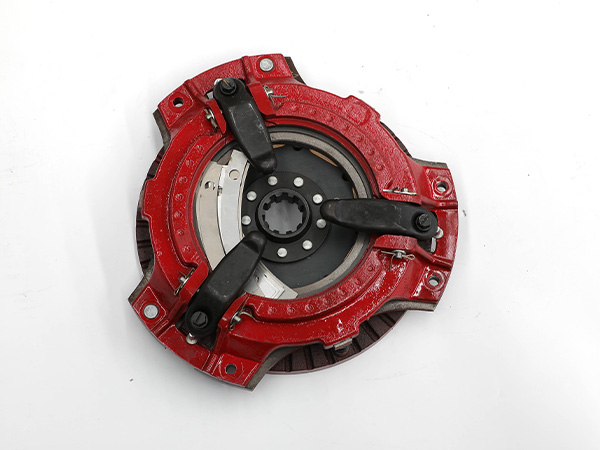In modern agricultural production, tractor is a very important machine, and no other machine can replace the work of tractor. Therefore, tractor is widely used in agricultural production at home and abroad.
The use of the tractor clutch can ensure the smooth shifting and shifting of the tractor, and is one of the important accessories to ensure the normal operation of the tractor. With the development of society and the advancement of science and technology, knowledge such as electricity, heat, and information technology has been gradually applied to the machinery manufacturing industry, and the manufacturing technology of tractors has also improved, and has begun to gradually develop towards informatization, which has a great impact on the quality and performance of tractor clutches. Requirements have been further improved. Therefore, the research on the working principle of tractor clutch, how to use it and its maintenance and repair is also the work that tractor manufacturers and users have been doing all the time. Today, I will simply share with you how the tractor clutch works, precautions for use and how to overhaul.
How the tractor clutch works can be understood from its structure and working principle.
The composition and working principle of the tractor clutch
The tractor clutch is mainly composed of four parts, namely: the active part, the driven part, the pressing device and the operating mechanism. The clutch is mainly composed of a flywheel and a pressure plate of the clutch. The flywheel is directly connected to the crankshaft of the engine and is controlled by the crankshaft; the clutch pressure plate is connected to the gearbox, and the transmission force is transmitted to the gearbox through the combination of the flywheel and the clutch pressure plate. The gearbox performs shifting work. In the process of using the clutch, there are two states, namely the combined state and the disengaged state. When the clutch is in the engaged state, the pedal of the clutch is at the highest position, at this time, there is no contact between the release lever in the clutch and the release bearing, and the clutch pressure plate presses the driven plate, thereby transmitting the transmission force to the transmission; while in the disengaged state When the clutch pedal is stepped on, the gap between the release lever and the release bearing is eliminated. At this time, the pressure plate and the release lever move downward under pressure, causing the pressure on both sides of the driven plate to decrease and disappear. The transmission force is transmitted to the transmission, that is, the disengagement state of the clutch.

Precautions for the use of tractor clutches
1. When starting, the clutch pedal should be lifted correctly
When the tractor is just starting, the clutch pedal should be stepped on correctly, and the clutch plate should not be lifted violently, which will make the clutch combination not stable enough and cause great damage to the friction plates. The correct starting method should be “fast, slow, slow”. When the tractor starts, quickly make it in a low gear, and pause to find the contact point at this time, and then change to a high gear to protect the safety of the tractor clutch. , to avoid unnecessary safety accidents caused by clutch damage when the tractor starts.
2. Be quick and thorough when separating
The disengagement speed during the disengagement process of the tractor clutch is generally in the opposite state to that during the combination process. When disengaging the clutch, care should be taken to do it quickly and thoroughly to avoid slow disengagement, which will cause a lot of heat due to friction, which will cause serious burn damage to the friction plates, seriously affect the life of the clutch, and be extremely harmful to the clutch. big. Therefore, when disengaging the clutch pedal, attention should be paid to the speed and degree of disengagement to protect the clutch from damage.
Tractor clutch overhaul
For the tractor used for farming, there will be a situation of not using it for a long time. If there is no good machine maintenance habits, it is likely to cause some small parts of the clutch to fail.
For example, the clutch will rust due to long-term non-use. At this time, the clutch should be removed in time and the rust should be cleaned up.
Or there will be clutch slippage, and this kind of failure is mainly caused by the following factors: such as oil on the surface of the friction plate; too small or no free clearance of the clutch; wear of the friction plate; broken or weakened elastic force of the pressure spring; driven disc Warping and deformation, the unevenness of the flywheel and the pressure plate plane is too large; the return spring is loose or broken, etc. At this time, we should take an appropriate maintenance plan according to the cause of the clutch failure.
I believe that through this article, you have a better understanding of the working principle, use precautions and maintenance of tractor clutches. As a manufacturer and trader specializing in the research and development and production of tractor clutch assemblies and clutch plates, our products are all It meets international quality standards and is well-received in a variety of different markets around the world.


